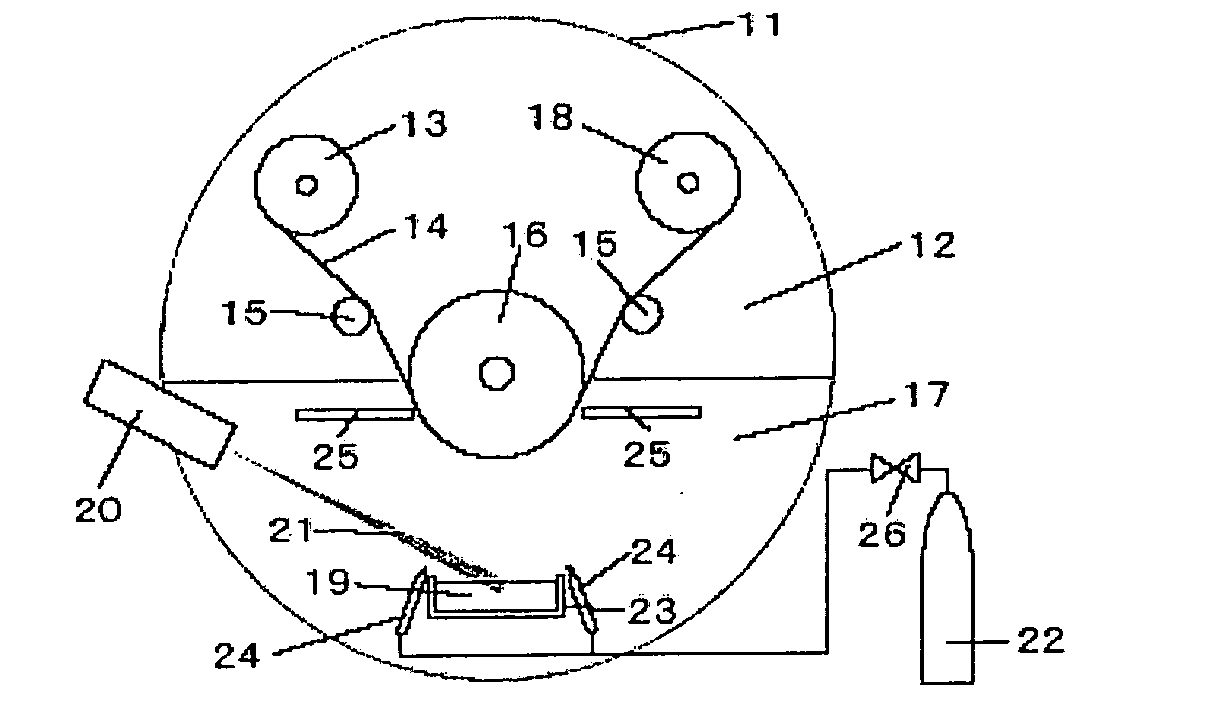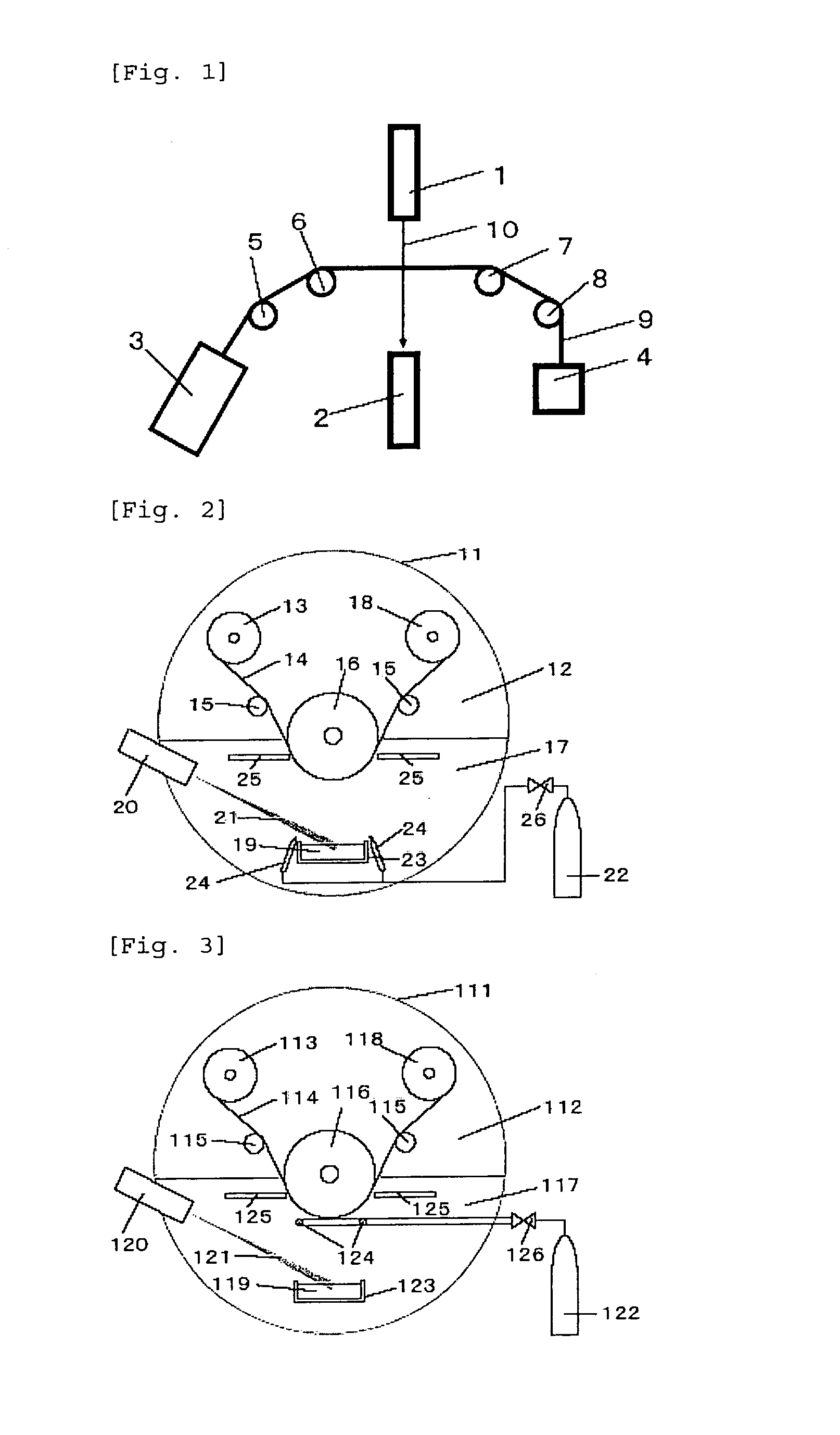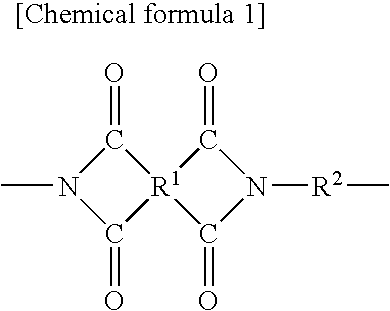Support for Magnetic Recording Medium, and Magnetic Recording Medium
a technology of magnetic recording medium and support, which is applied in the direction of magnetic materials for record carriers, instruments, record information storage, etc., can solve the problems of inability to realistically be used as general purpose recording media substrates, recording tracks are liable to deviate, and aromatic polyamides are very expensive and costly. , to achieve the effect of good dimensional stability, small error rate and little chance of cracking
- Summary
- Abstract
- Description
- Claims
- Application Information
AI Technical Summary
Benefits of technology
Problems solved by technology
Method used
Image
Examples
reference example 1
[0123]An ester interchange reaction vessel was charged with 194 parts by weight of dimethyl terephthalate and 124 parts by weight of ethylene glycol, and the mixture was heated at 140° C., for being dissolved. Then, while the mixture was stirred, 0.1 part by weight of magnesium acetate tetrahydrate and 0.05 part by weight of antimony trioxide were added, to perform an ester interchange reaction while methanol was distilled out at 140 to 230° C. Subsequently, 1 part by weight of 5 wt % trimethyl phosphate ethylene glycol solution (0.05 part by weight as trimethyl phosphate) was added.
[0124]When the trimethylphosphoric acid ethylene glycol solution was added, the temperature of the reaction mixture declined. So, while excess ethylene glycol was distilled away, stirring was continued till the temperature of the reaction mixture returned to 230° C. When the temperature of the reaction mixture in the ester interchange reaction vessel reached 230° C. as described above, the reaction mixtu...
reference example 2
[0126]A vented double-screw kneading extruder with the screws rotating in the same direction, heated to 280° C., was charged with 98 parts by weight of the PET pellets X prepared in Reference Example 1 and 20 parts by weight of an aqueous slurry containing 10 wt % of crosslinked spherical polystyrene particles with an average particle size of 0.3 μm (2 parts by weight as crosslinked spherical polystyrene), and the vent hole was kept at a vacuum degree of 1 kPa or less, to remove water, for obtaining PET pellets Y with an intrinsic viscosity of 0.62 containing 2 wt % of crosslinked spherical polystyrene particles with an average particle size of 0.3 μm.
reference example 3
[0127]PET pellets Z with an intrinsic viscosity of 0.62 containing 2 wt % of crosslinked spherical polystyrene particles with an average particle size of 0.8 μm were obtained according to the same method as described in Reference Example 2, except that crosslinked spherical polystyrene particles with an average particle size of 0.8 μm were used instead of the crosslinked spherical polystyrene particles with an average particle size of 0.3 μm.
PUM
| Property | Measurement | Unit |
|---|---|---|
| light transmittance | aaaaa | aaaaa |
| thickness | aaaaa | aaaaa |
| roughness Ra | aaaaa | aaaaa |
Abstract
Description
Claims
Application Information
 Login to View More
Login to View More - R&D
- Intellectual Property
- Life Sciences
- Materials
- Tech Scout
- Unparalleled Data Quality
- Higher Quality Content
- 60% Fewer Hallucinations
Browse by: Latest US Patents, China's latest patents, Technical Efficacy Thesaurus, Application Domain, Technology Topic, Popular Technical Reports.
© 2025 PatSnap. All rights reserved.Legal|Privacy policy|Modern Slavery Act Transparency Statement|Sitemap|About US| Contact US: help@patsnap.com



